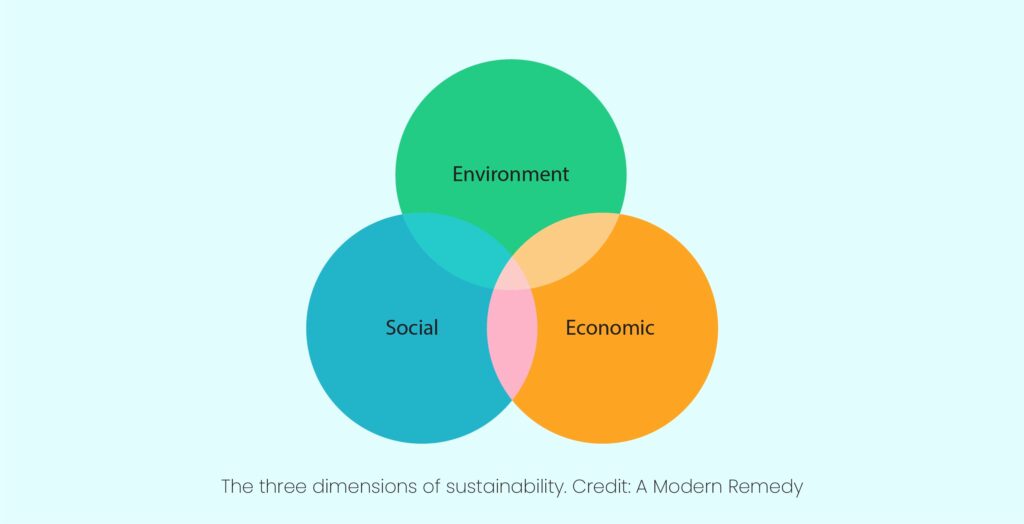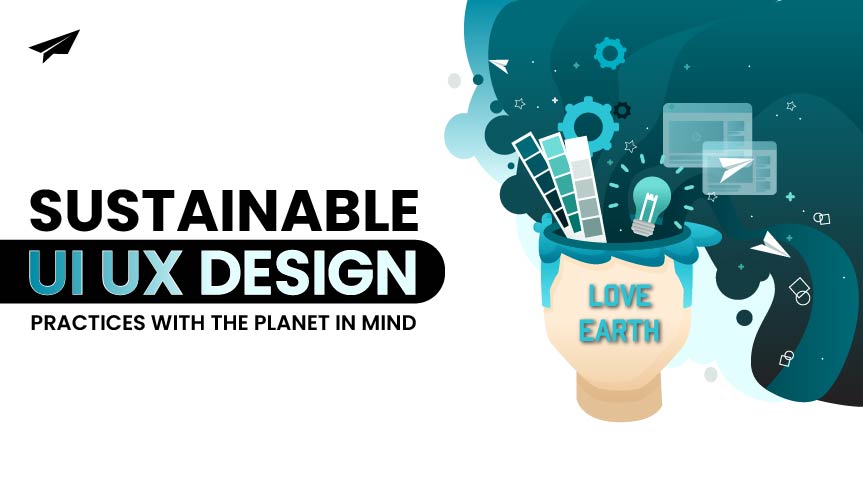Sustainable UI UX Design Practices with the Planet in Mind
UI UX designers are transforming the world by designing impactful products, services, and digital experiences.
Nowadays, the increasing environmental and social issues are urging a shift in our practice and focus from a pure usability lens to a more holistic perspective.
Sustainable UI UX helps designers create digital experiences that add measurable economic, social, and environmental value through principles that support the wellbeing of people and the planet.
Today people of all age groups are spending increasing amounts of time surfing through the web. While much attention has been given to the negative effects of excessive screen time, the environmental impact of our online activities often goes unnoticed.
What if there were a strategy that not only benefited people and our planet, but also reduced our digital footprint, supported our planet, and added value to implementing enterprises?
Fortunately, there is: Sustainable Design empowered by UI UX designers.
What does Sustainable Design actually mean?
Sustainable design is basically the marriage of user experience and eco-consciousness.
Sustainable design involves implementing sustainability goals within UI UX design. That means creating designs and experiences that consider and effectively support the planet with positive social, environmental, and economic outcomes.

The Key Principles of Sustainable UX Design: A Blueprint for Green Design
Efficient User Journeys: The core idea of green design is to make user journeys as efficient as possible, cutting down on energy use. By simplifying tasks and removing unnecessary steps, designers can create experiences that are both user-friendly and eco-friendly. Take, for instance, streamlining the checkout process on a shopping site – it not only makes customers happier but also saves energy with each purchase.
Minimalist Design: Simplicity in design by reducing clutter and unnecessary elements, leading to a lighter digital footprint. With minimalism, we mean focusing on what truly matters. By reducing visual clutter, designers can enhance user focus, simplify navigation, and conserve resources. A minimalist digital interface enables digital sustainability.
Performance Optimization: Slow-loading websites not only frustrate users but also exhaust energy resources. Sustainable design highlights the importance of optimizing performance to create faster, more responsive digital experiences. From efficient coding practices to image compression techniques, every design aspect should be fine-tuned for optimal speed. By doing so, we enhance user satisfaction, reduce the energy required for data transfer, and empower digital sustainability.
Lifecycle Thinking: It involves a holistic consideration of a digital product’s journey, from its conceptualization to its final destination. At every step along the way, designers try to make choices that are good for the environment. They think about things like using designs that can be recycled, making sure the design doesn’t use too much energy, and finding ways to make it last longer. So, instead of just thinking about how the user experience works for people right now, they think about how it affects the planet in the long run.
Energy-Efficient Visual Design: Sustainable design supports energy-efficient visual design choices. For instance, using lighter color palettes and reducing complicated graphics and animations can decrease the energy required to load webpages. By embracing vector-based graphics and optimizing image sizes, a balance can be striked down between aesthetics and energy efficiency.
Why Sustainable UI UX Design is the FUTURE
Sustainable UI UX Design is the future, it basically aligns with the trending global awareness of environmental and social responsibility. As we listen to the growing concerns about climate change and resource depletion, businesses and users seek solutions that minimize environmental impact. And if these factors weren’t enough of a reason to drive your curiosity around digital sustainability, then here are a few more:
- Adjusting behaviors: Research has shown that users are more likely to turn to brands that can demonstrate environmental responsibility through their operations, products or services.
- Transparency is a must: More enterprises are shifting consumer trends and jumping on the sustainability train. But simply introducing ‘green’ into your design is not enough. You need to capture your impact through metrics and back that up with evidence in the form of marketing stories to prove your efforts are tangible and meaningful.
- Regulations: In places like the EU, there’s a push for rules that promote sustainable and eco-friendly business practices. For example, the Corporate Sustainability Reporting Directive makes it compulsory for businesses to share reports about how they affect the environment and society. These reports will start coming out in 2025, and they’re expected to spark discussions among policymakers, industries, and consumers once people see what companies are doing.
- Competitive Advantage: Companies that prioritize Sustainable UI UX Design gain a competitive edge by differentiating themselves in the market. They attract environmentally conscious consumers, enhance brand reputation, and position themselves as leaders in corporate social responsibility.
- Cost Savings: Sustainable design practices result in more efficient use of resources, leading to savings for businesses. By optimizing energy consumption, reducing waste, and minimizing environmental impact, companies can lower expenses and improve their bottom line.
Exploring Sustainability with Tekglide’s UI UX Designers
We at Tekglide integrate sustainable principles into the design process. Collaborating with us means our UI UX designers explore innovative ways to create digital experiences that prioritize environmental sustainability. We make you rethink traditional design practices, reduce digital footprints, and embrace eco-friendly materials and processes with sustainable web design. Together, let’s drive positive change within the organization and inspire others in the industry to adopt sustainable UI UX design practices for a greener future.
Conclusion
In conclusion, sustainable UI UX design practices with the planet in mind are necessary for creating digital experiences that minimize environmental impact and promote a more sustainable future. By incorporating eco-friendly principles into the design process, designers can reduce energy consumption, minimize waste, and prioritize user experiences that align with digital sustainability. Incorporating sustainable web design practices with the planet in mind is ethical and essential for addressing today’s environmental challenges.







